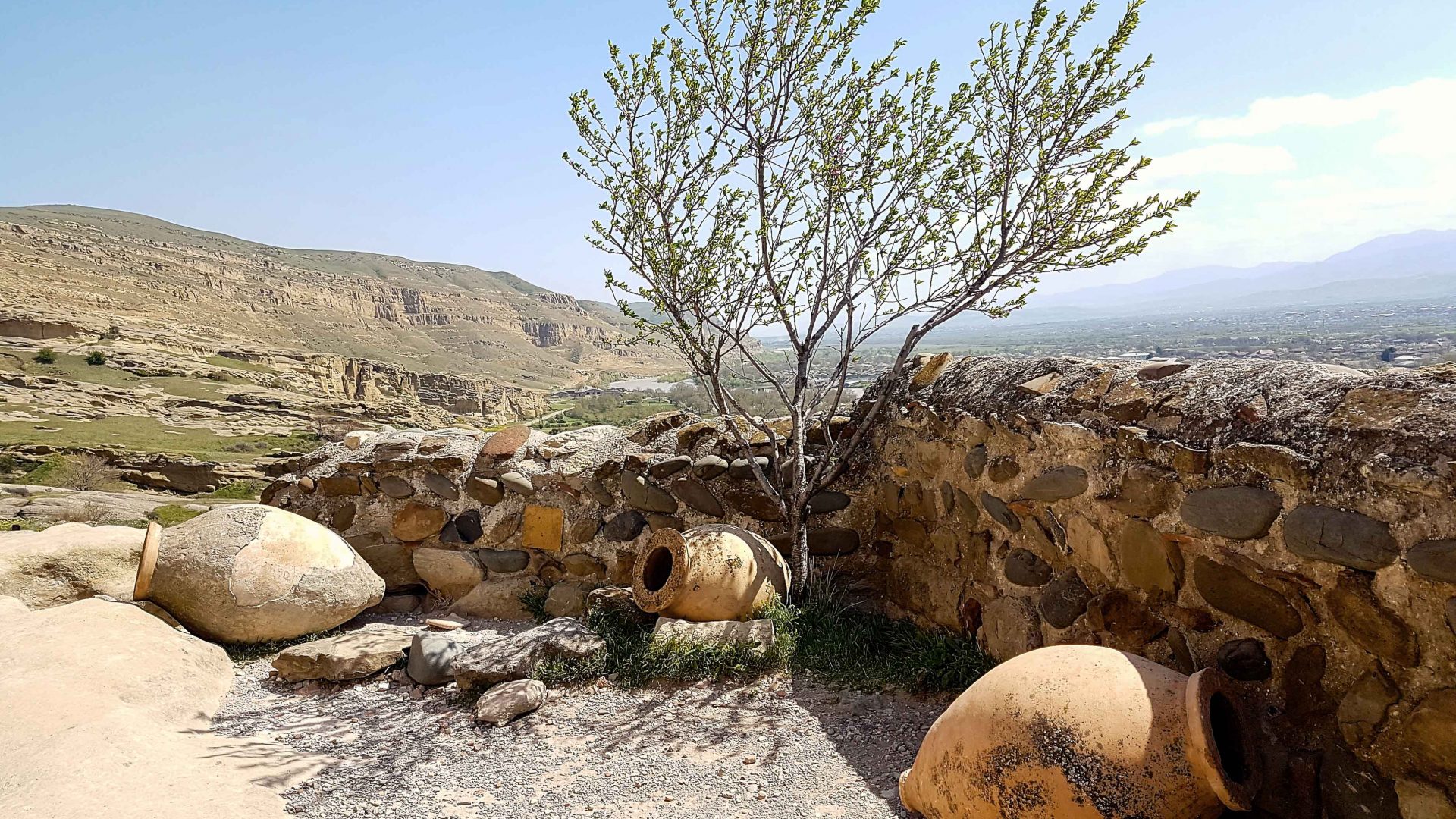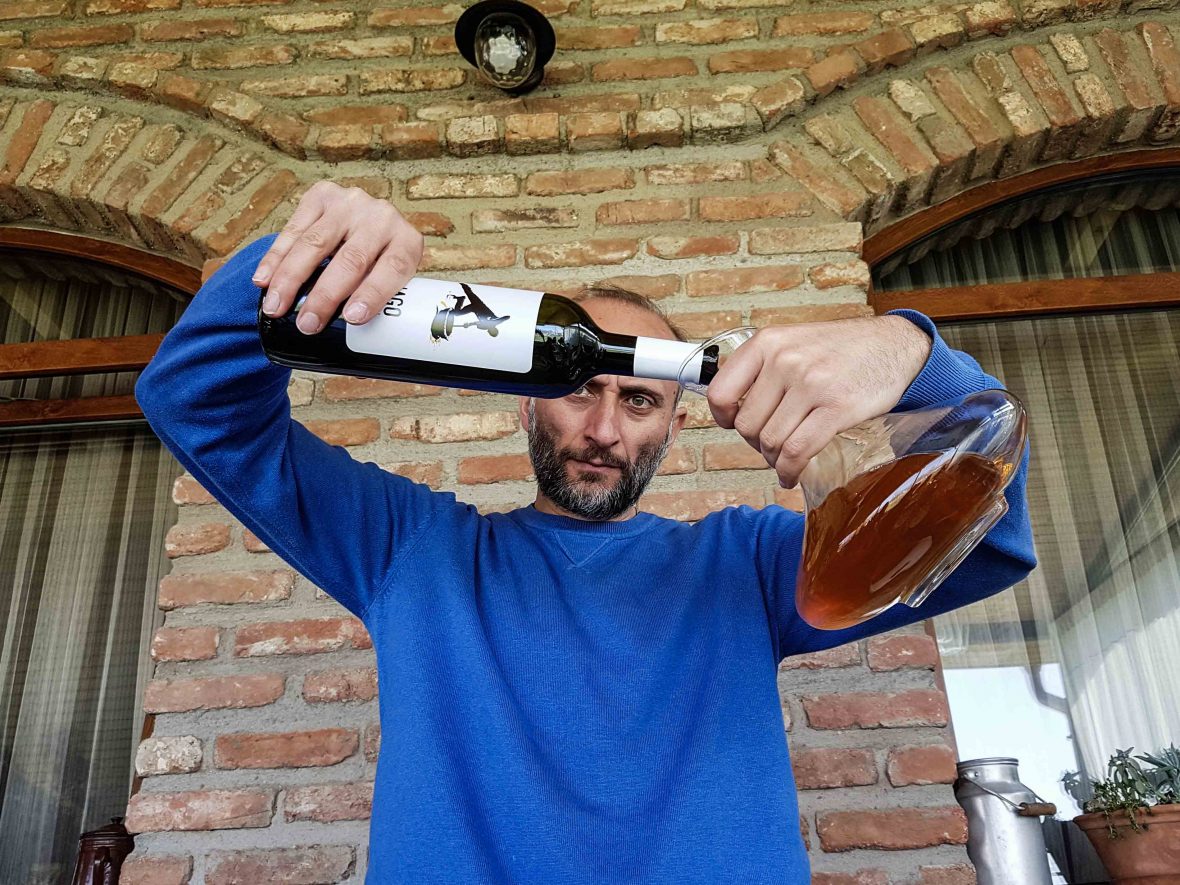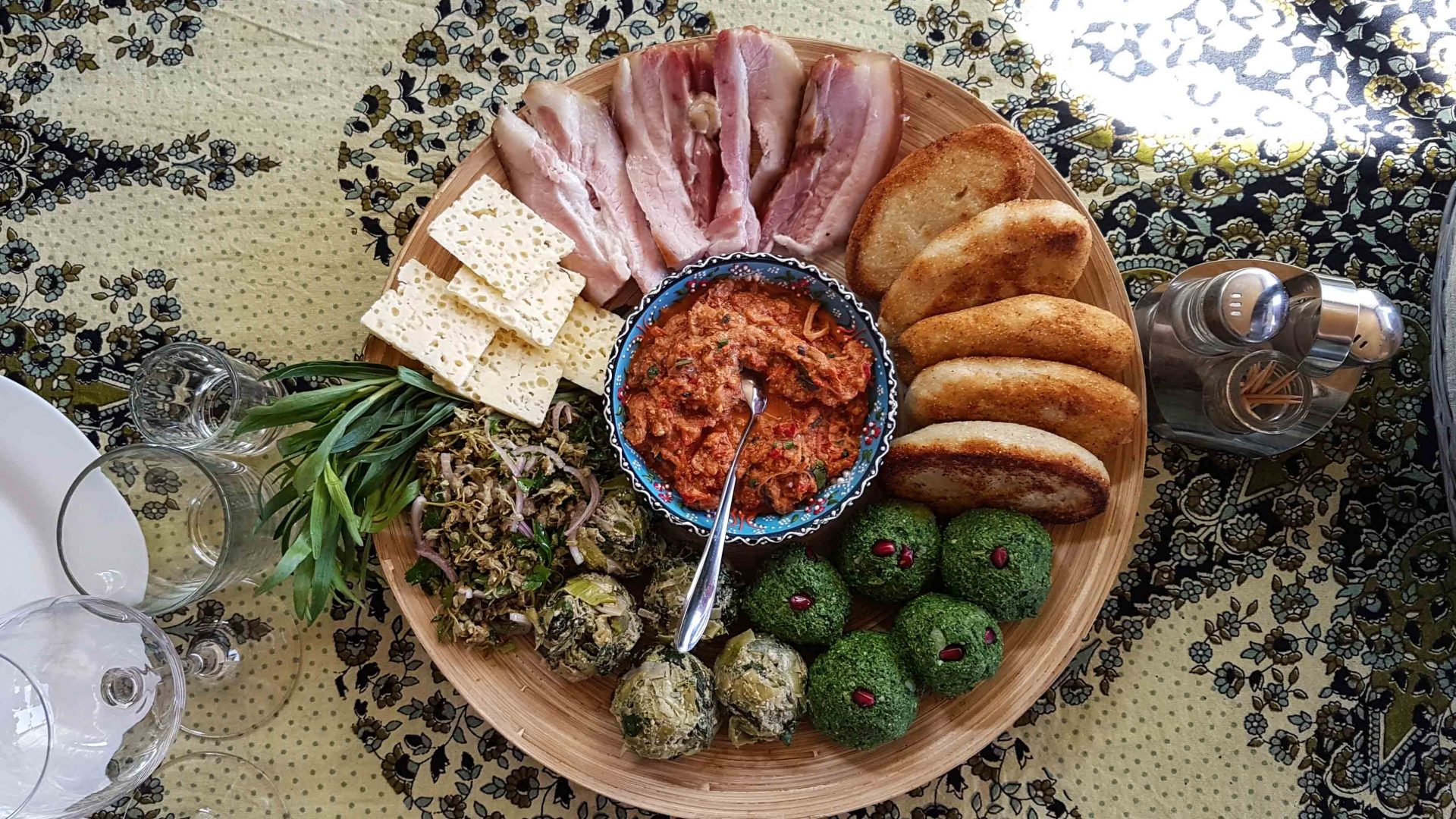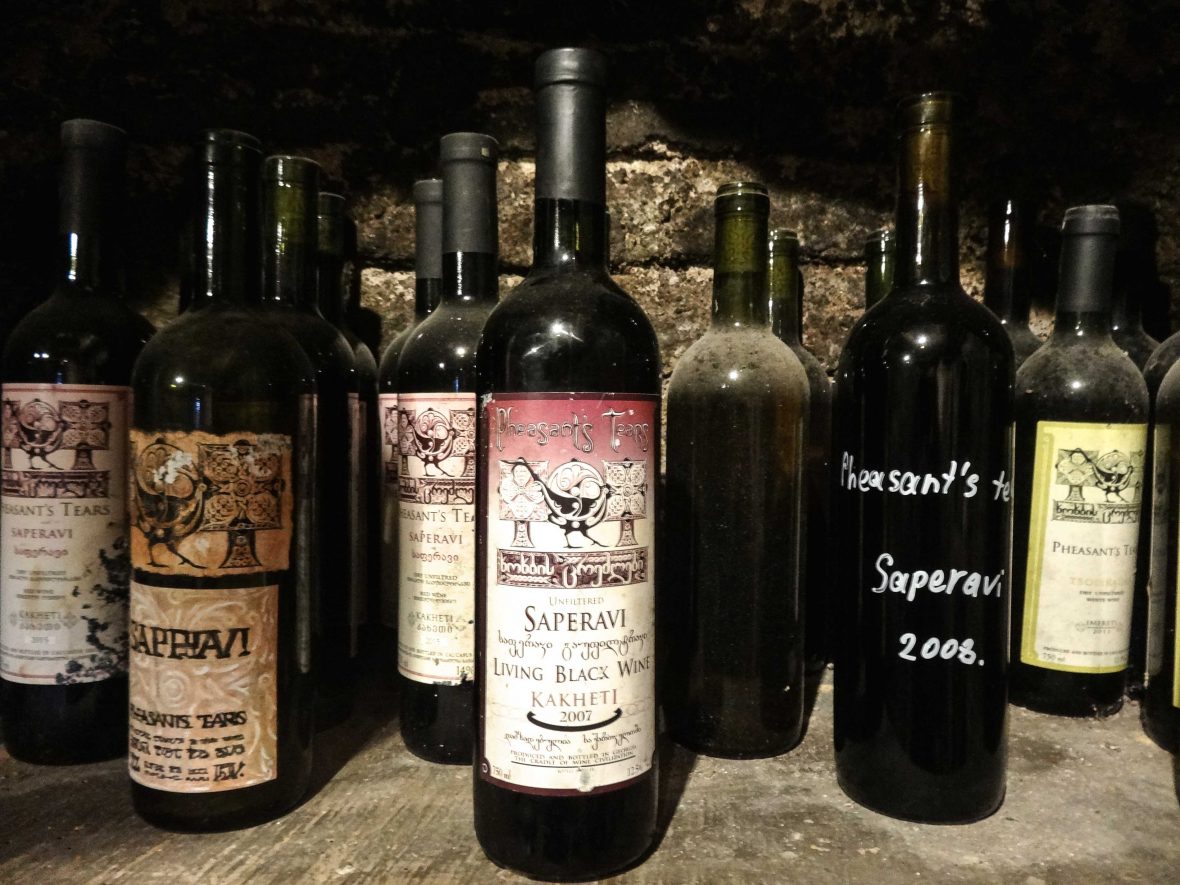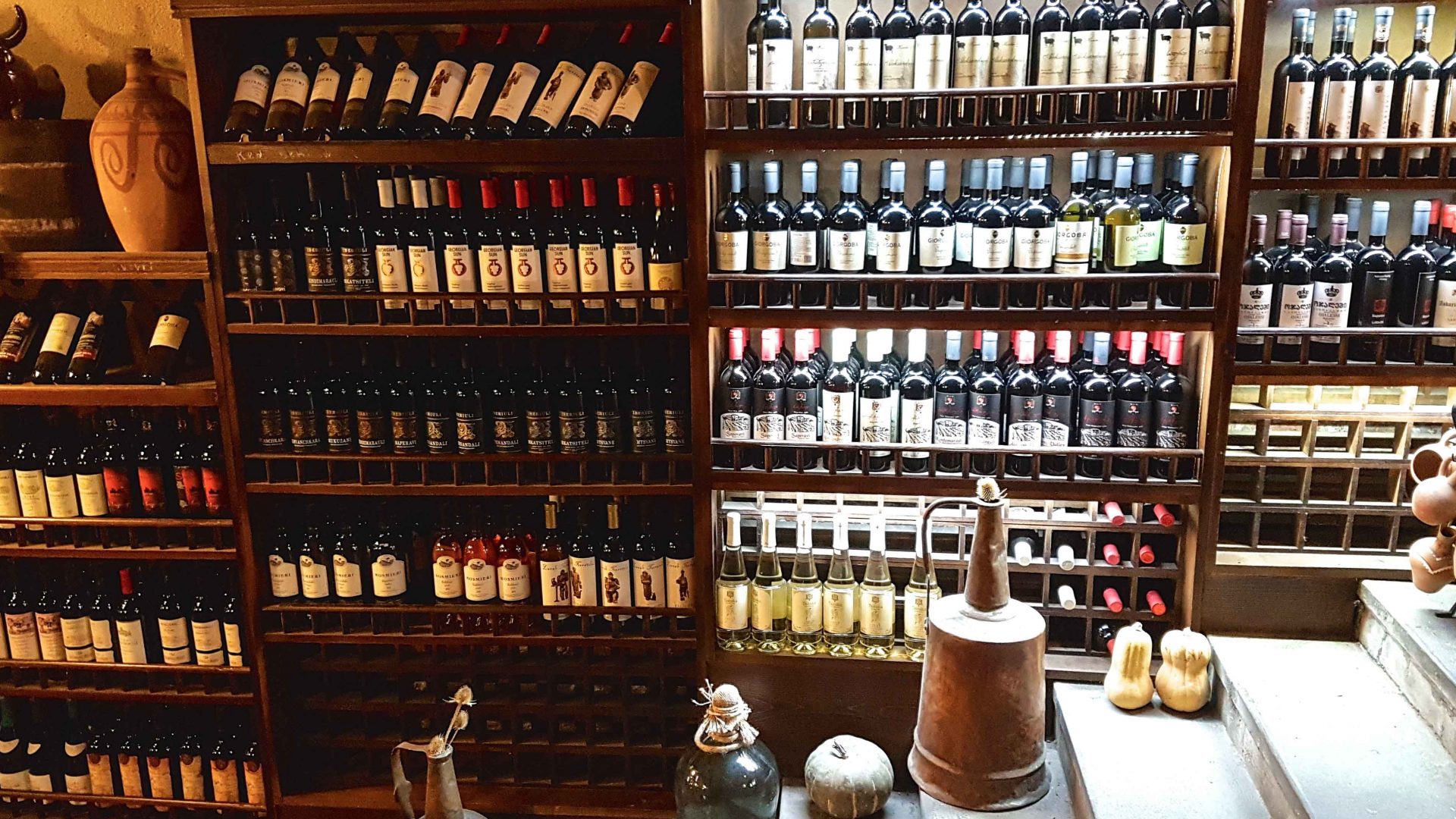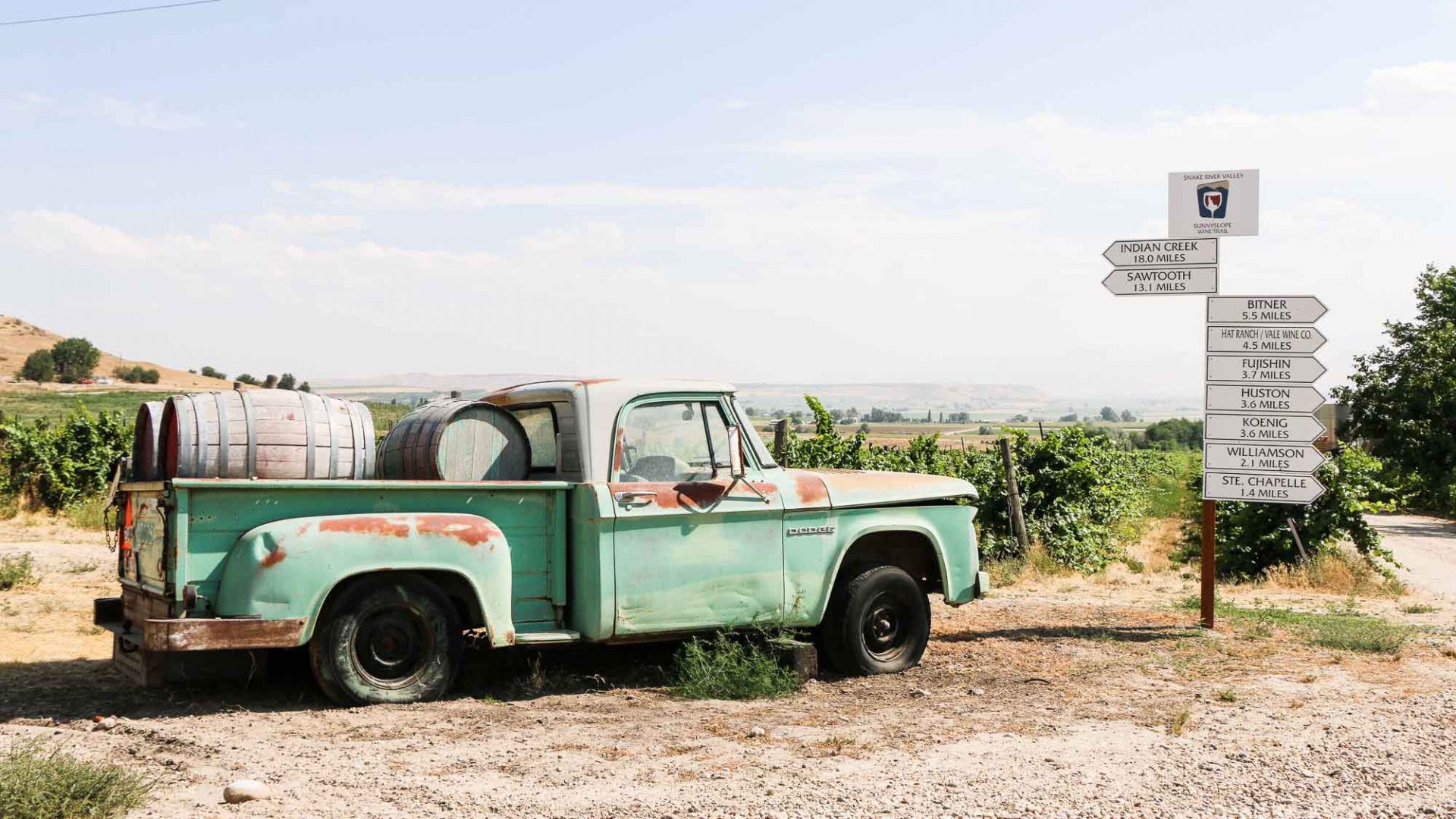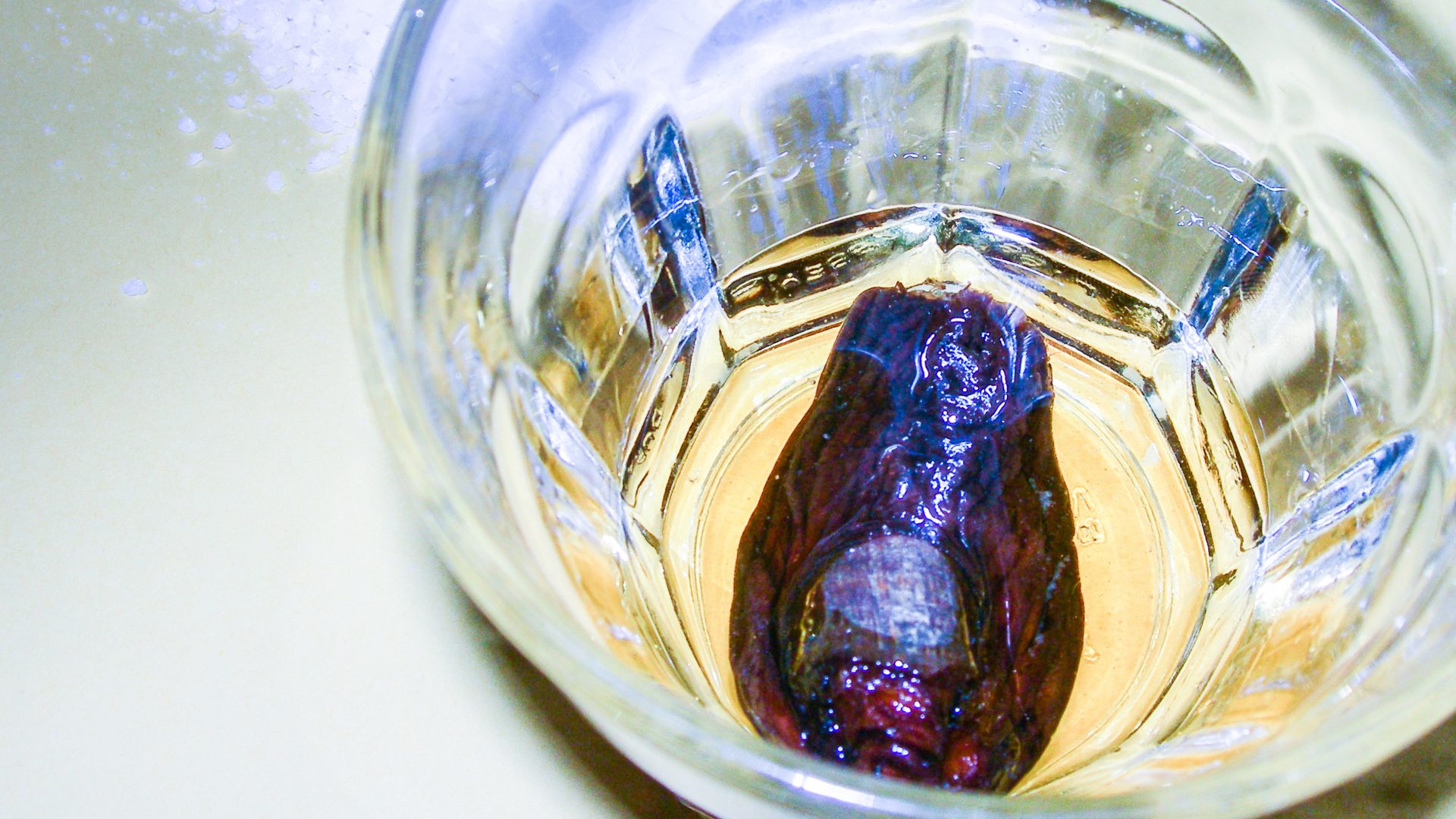Laying claim to an 8,000-year-old winemaking heritage (the world’s oldest) and over 500 native grape varietals, the small, ex-Soviet country of Georgia is a surprising destination for oenophiles.
There is certain protocol for receiving wine in a restaurant. First, there’s the wine list ushered forth by a trained sommelier. A bottle is selected and presented for inspection: First the label, then the cork. A taste is poured into polished, varietal-appropriate stemware. Finally, the wine is swirled, sniffed, and sipped.
The first time I encounter wine in Georgia, it’s nothing like this. Sat in Sormoni, a no-frills Soviet-era restaurant outside of the city of Kutaisi, west of the capital Tbilisi, a fat jug of wine is inelegantly plopped down on the plastic tablecloth that’s already crowded with dishes of pastoral fare.
In its glass vessel, the wine’s the color of the sun on a hot day—almost white and thin. There’s no fancy glassware either; it gets sloppily sloshed into stout tumblers that, at most, hold a few ounces at a time.
I ask Ia, my guide, what kind of wine it is and I’m told it’s Imereti wine (aka house wine, as we’re in the region of Imereti). When I press her for more information, Ia tells me it’s probably Tsitska, a dry white grape grown throughout the sunny Imereti region. The family who runs the restaurant makes it. “Almost every family in Georgia makes their own wine,” explains Ia. To ask this question is as strange as asking who made the mchadi (cornmeal bread) besides the pitcher of wine. Of course, it’s made here.
RELATED: America’s pioneering women wine warriors
I head into the kitchen to meet the staff after my epic meal of thick and squeaky country cheese, bright salads slathered in walnut paste dressing, and wood-roasted piglet lashed with sharp plum sauce called tkemali. In the simple kitchen, the master chefs behind the meal greet us in aprons and headscarves. One sits clattering beads on an abacus. These are the winemakers behind my first oenophile experience in Georgia.
And the wine? It’s … interesting. There’s no burst of acidity or burn that you might expect from homebrewed booze. Instead, it’s surprisingly balanced, refreshing, and certainly complimentary of the fresh food. It doesn’t taste like wine as I know it—but I almost immediately like it.
Yet despite homemade production, there are also plenty of small-batch producers who are presenting and marketing their wine in a more official manner.
Iago Bitarishvili of the eponymous Iago’s Winery in Mtskheta, just north of Tbilisi, is one such producer. You can find his winery and others by looking out for the brown road signs marking the wine route along the highways of Georgia. And by the way, though you don’t necessarily need a tour guide, you will need a driver if you’re planning on stopping—and drinking—at the wineries.
Iago’s wine is available in 11 countries worldwide, and he’s noticed an uptick in popularity, due in part to wellness and organic trends. “The philosophy of natural wine is that you don’t change anything,” says Iago, his intense blue eyes underscoring this key idea. “If you have high quality in the vineyard, we can keep this high quality in the wine. This wine is for everybody, but especially it’s for the people who think that nature does it best.” Luckily, more and more people are beginning to think like this—myself included, after this trip.





